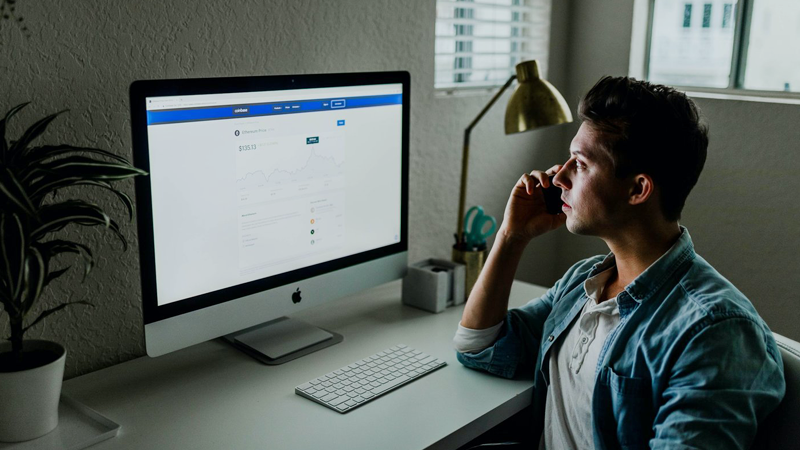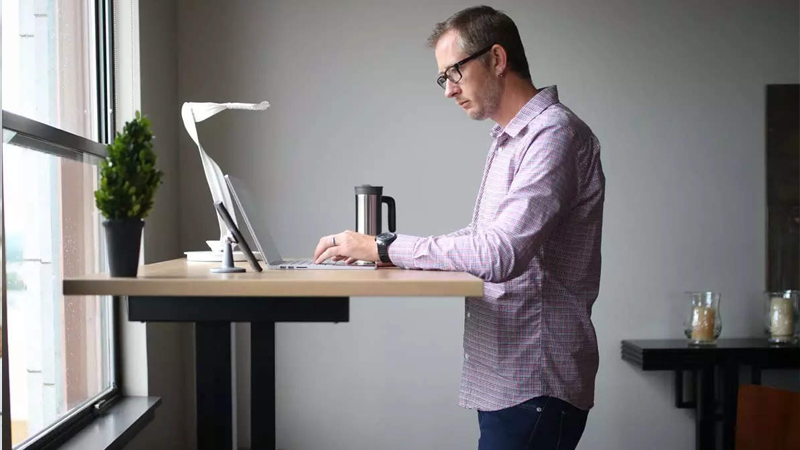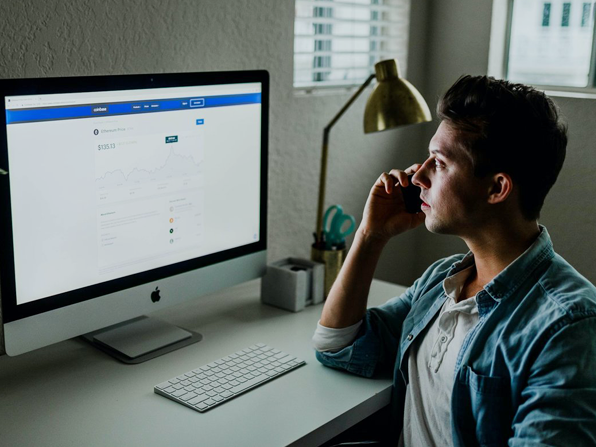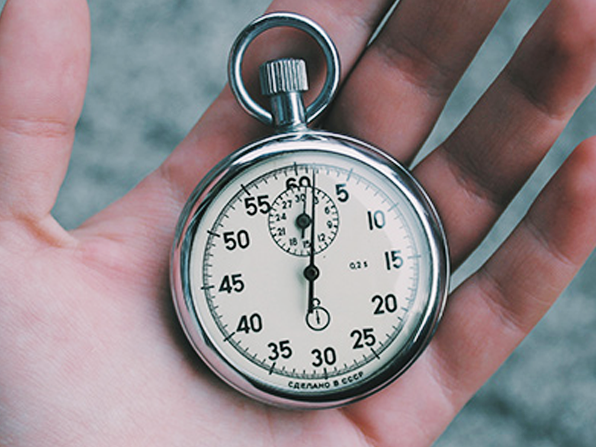
To lose weight with a desk job, focus on small but impactful changes to your daily routine. This includes choosing healthier snacks over junk food, standing more often, doing light exercises, and taking quick walks during breaks.
The office lifestyle can be a real weight gain trap. Sitting for 8+ hours daily slows your metabolism and can add pounds even without changing your diet.
As both a personal trainer and someone who spends hours at my desk writing programs and content, I understand this challenge from both sides. I've experienced the afternoon energy crashes, the snack cravings, and the stiffness from too much sitting.
The strategies I'm sharing today aren't just theoretical.
You'll learn about the practical habits that have worked for me and many folks I coach online who spend their days desk-bound in sedentary jobs, and recognize the signs they need to lose weight.
Transforming Your Eating Habits as a Desk Warrior
As I discuss in my 5 Facts for Losing Weight You Must Know to Succeed article, nutrition and portion control matter more than anything else. Let's start with the foundation of office weight management: controlling what you eat when temptations surround you.

Meal Prep Tips to Combat Temptations
Monday morning hits, and the cafeteria is serving pizza again. Without a plan, you'll grab whatever's convenient. Meal prepping will save you from this trap.
I recommend starting with a “Sunday power hour.”
Take 60 minutes to prepare lunches for at least the first three days of your work week. Batch cooking proteins like grilled chicken breast or baked salmon gives you lean protein options that keep you full longer. Pair these with pre-chopped vegetables and cooked quinoa or brown rice stored in grab-and-go containers.
Mason jar salads are another option that works for many of my clients with desk jobs. The dressing goes at the bottom, followed by hearty vegetables, proteins, and greens at the top. This keeps everything fresh until lunch break…you just shake it up when ready to eat.
Keep breakfast simple but strategic. Overnight oats with protein powder or Greek yogurt parfaits can be prepped in batches and grabbed on your way out. The protein content helps prevent the mid-morning hunger that sends you hunting for donuts in the break room.
If cooking sounds overwhelming, try the 2+2+2 method. Prepare two proteins, two carb sources, and two vegetable options that you can mix and match throughout the week.
I know it may sound too much, but perfect isn't necessary.
Even prepping just lunches gets you closer to your short and long-term weight loss goals, saving a few hundred calories compared to eating fast food.
Strategies to Avoid Break Room Pitfalls
Office break rooms are weight loss minefields. The birthday cakes, leftover meeting donuts, and community candy bowls add hundreds of empty calories to your day without you even noticing.
That's why I tell my clients to eat before attending office celebrations.
Having protein in your system makes those sugary treats less tempting. When you know there's an office party coming up, have a protein shake beforehand so you're not making decisions on an empty stomach.
Those vending machines in the office building aren't your friends either. A recent study shows that an average vending machine snack contains around 227 calories per serving, with some snacks reaching up to 590 calories.
If possible, walk a different route to avoid visual triggers from office vending machines.
When faced with limited options, pick protein first. If ordering lunch with coworkers, go for salads with chicken or fish instead of the typical cafeteria food.
For meetings with food, position yourself away from the snack table. Something I emphasize when coaching people with office jobs is that physical distance reduces mindless eating.
Desk Drawer Defense to Control Hunger
Some desk-bound workers I've helped successfully start a weight loss journey complained that they still fall victim to afternoon vending machine runs when hunger strikes.
The solution is a carefully curated selection of nutritious snacks in your desk drawer. Of course, you need options that don't require refrigeration while still supporting your healthy weight goals.
Here is a list of non-perishable healthy snack options that I'd recommend:
» Protein bars (at least 10g protein and under 5g sugar)
» Single-serve nut butter packets to pair with an apple
» Portion-controlled nut mixes (about 1/4 cup per serving)
» Roasted chickpeas for a crunchy, high-fiber option
» Grass-fed beef jerky or turkey jerky (watch sodium levels)
» Tuna packets in olive oil for emergency protein
» Plain oatmeal packets (you can add your own cinnamon)
» Dried fruit and nut combos (in pre-portioned containers)
» Seaweed snacks for a savory, low-calorie crunch
» Single-serve guacamole cups with seed crackers
» Dark chocolate squares (70%+ cacao) for sweet cravings
Timing matters too. I eat protein-rich snacks between meals when energy levels typically dip, usually around 10:30 AM and 3:30 PM. This strategic snacking prevents the desperate hunger that leads to poor food choices.
Hydration Office Hacks for Weight Loss
Many mistake dehydration for a need for calories (thirst with hunger).
When I feel hungry between meals, I first drink 12 ounces of water and wait 15 minutes. Half the time, the hunger disappears completely.
But I used to forget about drinking water when working on my computer for hours. Now, I keep a large water bottle with time markers on my home desk. It has lines indicating how much I should drink by certain hours.
You could also try this to help you maintain adequate water intake throughout the day in the office.
And cut those sugary drinks. Swapping just one 20-ounce soda daily for water saves you about 250 calories. Diet sodas are no good, too. Your body needs water, and water is a great way to suppress your appetite when trying to lose weight.
Maximizing Physical Activity in a Sedentary Environment
Working a desk job doesn't mean you're doomed to inactivity. I've helped many find ways to add movement into their office routines and create a defense against the negative effects of day sitting.

Non-Exercise Activity Thermogenesis
NEAT sounds complicated, but it's just a fancy term for how many calories you burn through everyday movements that aren't formal exercise.
Combining NEAT with exercise is an effective way to accelerate weight loss. For desk workers, these mini-movements can also make a surprising difference in preventing weight gain.
Last year, I tracked my steps and noticed something interesting – on days I'm actively increasing my NEAT, I burn an extra 300-400 calories without ever setting foot in a gym. That's equivalent to a 30-minute run, just from accumulating small daily movements.
Here are some simple habits you can develop to burn extra calories:
» Take the stairs instead of the elevator in your office building
» Pace around rather than sitting still during phone calls
» Walk to your colleague's desk instead of sending an email
Even fidgeting counts. Tapping your foot, stretching occasionally, or shifting positions in your desk chair all increase your calorie burn.
The idea is to build more movement into what you're already doing and boost the thermogenesis process to support your weight loss efforts in a sedentary job.
Standing Desks and Ergonomic Solutions
Most people are skeptical about standing desks, but I'd encourage you to try.
You don't need to shell out hundreds for an expensive model. One of my clients put a cardboard box on their work desk to raise the laptop. Others use adjustable desktop converters on existing surfaces, so they can alternate between sitting and standing.
Just don't try to stand all day immediately. Chances are you'll develop foot pain and quit. The key is gradual adaptation. I suggest starting with 20-minute standing intervals interspersed with sitting.
Beyond standing, ergonomic solutions support a more active posture.
Swapping your desk chair for a stability ball forces your core muscles to engage constantly. A wobble stool encourages “active sitting” that burns more calories than traditional chairs.
If you're more enthusiastic, consider creating movement zones in your work environment.
For example, I keep light dumbbells near my home desk for quick bicep curls between tasks. A resistance band looped around your desk leg offers discreet strength training. That's an effective way to boost metabolism without disrupting workflow.
Office Exercises Without Leaving Your Chair
Let me tell you about what I believe are the three most effective exercises to maintain fitness at a desk job. You can perform these in most office settings and burn calories between meetings or while waiting for files to load.
Judging by the people I coach online, one exercise set per hour is achievable for everyone.
1. Sitting Leg Raises
Start with good posture, with your hands gripping your chair's sides for stability. Extend one leg straight out in front of you, hold for 2 seconds at the top with toes pointed, then lower without letting your foot touch the ground. Do 15 repetitions per leg.
This exercise strengthens your quadriceps and core while boosting your heart rate.
2. Seated Torso Twists
Sit tall with feet flat on the floor, hip-width apart. Hold a water bottle or stapler with both hands at chest height. Twist your torso to the right as far as comfortable, hold for a second, return to center, then twist left. Complete 20 total twists.
This movement targets obliques and helps reduce belly fat while improving spinal mobility.
3. Desk Push-Ups
Face your desk with feet hip-width apart. Place hands on the desk edge, slightly wider than shoulders. Move your chair back until your body forms a straight diagonal line. Lower your chest toward the desk by bending your elbows, then push back up. Start with 8-10 repetitions.
This push-up strengthens your chest, shoulders, and arms while elevating your heart rate for calorie burn.
Break Time Workouts to Burn Calories
Here are some easy ways to use those short breaks throughout the day to increase metabolism and energy levels.
Use your building's stairs for a quick but effective workout. Walk up and down one flight during a five-minute break, or tackle several floors during your lunch break. This simple activity burns 5-10 calories per minute and strengthens your legs.
Head outside for a quick walk around your building or parking lot. Walking at a moderate pace burns about 100 calories per mile, and the fresh air is also beneficial. See how far you can go in 10 minutes – then increase that distance over time.
And if you have colleagues who also want to lose weight, here are some fun and effective weight loss challenge ideas you could try together.
Mental Strategies for Healthy Weight (Home & Office)
The physical aspects of weight loss get most of the attention, but your mental state profoundly impacts your waistline. These mental strategies complement the healthy meals and movement habits we've discussed.

Manage Stress to Eat Less
High stress triggers cortisol release, which increases appetite and cravings for sugary, high-fat foods. That's why I suggest trying these stress management techniques:
» Take 10 deep breaths before responding to stressful emails
» Use a stress ball during phone calls to release physical tension
» Install a meditation app for 3-minute breathing breaks
» Keep a gratitude notepad to jot down positive moments
» Set boundaries by turning off work notifications after hours
Sleep Well to Weigh Less
Poor sleep can derail weight loss efforts by disrupting hormones that control appetite. I prioritize sleep quality with the same seriousness as my exercise routine. Here are my slightly modified sleep tips for desk workers:
» Stop screen time 60 minutes before bed (blue light blocks melatonin)
» Create a consistent sleep schedule, even on weekends
» Keep your bedroom 3-5 degrees cooler than daytime temperature
» Use blackout curtains to eliminate light disruption
» Try a weighted blanket to reduce work-related anxiety
Create a Consistent Daily Routine for a Healthy Lifestyle
This is your most powerful weight loss tool as a desk worker.
Forget about extreme diets or magic pills. I've seen remarkable transformations from people who systematically rebuilt their everyday habits, rather than focusing on unhealthy ways to lose weight.
Your daily weight loss routine becomes your foundation when motivation inevitably fades.
Start with just one or two sustainable habits rather than overhauling everything at once. These small acts, performed consistently, create the momentum for bigger changes.
Here's a quick recap to tie it all together for you:
Prepare some meals, snacks, and easy to grab items ahead of time to avoid temptation and encourage you to stay on track.
Have protein before heading to a celebration or a catered meeting.
Healthy snacks you can keep in your drawer like beef sticks, nuts, homemade granola, tuna packets, seaweed snacks, dark chocolate squares, and single-serve nut butter packs.
Hydrate, hydrate, hydrate! Keep a large container of water near you at all times to remind you to sip throughout the day.
Set calendar reminders on your phone to get up and get a stretch or walk in.
And if you want to encourage a colleague to lose weight and support each other on this journey, check out this article.



